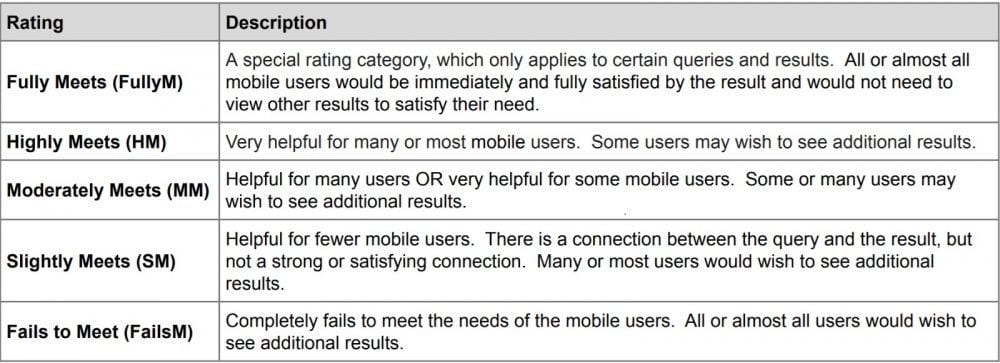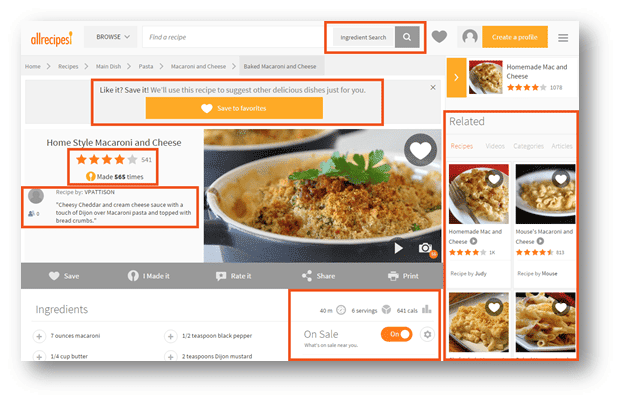In its efforts to deliver the best, most relevant search results, Google has developed quality guidelines centered around prioritizing E-A-T – expertise, authoritativeness, and trustworthiness. Obviously, those are great qualities for anyone to have, regardless of industry. Beyond that, those are human qualities. They create connections between us as people, and make it so a customer can see a business for the people behind it. In choosing to promote websites that are most reflective of these qualities, Google recognizes the need for actual human beings to identify them.
It’s true that Google uses plenty of algorithms to rank websites that don’t involve real people actually reviewing information. However, when it comes to values like E-A-T, which are not directly part of the algorithm, the only way to really determine if their automated algorithms are working is to use people’s perceptions. Those people are Google’s quality raters. Google has provided their raters with a specific guide, which outlines for them their standards for what makes a website high-quality. In addition to E-A-T, they are also looking for things like good branding and design, and determining a “needs met” rating, which is based on how mobile-friendly and useful a site’s content is. In making those determinations, raters have found that there are some consistent mistakes people make on their websites that ultimately lead them to consider them lower quality. Read on for more on those mistakes, and how you can avoid them and improve your chances of your website ranking highly on Google’s SERPs.
- Unclear contact information – According to a Google quality rater, websites not having transparent contact information are usually not considered trustworthy. The reason for that is obvious. Customers are more likely to want to buy from or work with you if they can contact you directly. They want to know that if they have a problem, they can reach you, and that you’re willing to engage with them. Making your contact information readily available and present throughout your entire website shows that you are reliable and want to communicate with your customers.Make sure to have your phone numbers, physical and email addresses, business hours, and other relevant information on your site and easy to find. You may even want to add a contact page to your site with a form visitors can quickly fill out if they have questions or concerns.
- Lack of About Us page – Including information about your company’s history on your website helps customers realize they’re dealing with real people, which ultimately establishes trust. Two of the things Google considers low-quality characteristics are “no website information” and “negative reputation.” Creating a space on your site where you list your accomplishments, education, company history, and credentials will make your website more trustworthy and establish expertise and authority.If, for example, a user conducts a search for a medical product that you sell, including your medical education on your website will help Google’s raters recognize that you are an authority in that space.
- Poor mobile optimization – In an increasingly mobile world, it’s crucial that your site can easily be accessed through a cellphone. In fact, Google tells their quality raters to rate any page that’s not mobile-friendly at the lowest rating.The following is a guide that raters use to determine a site’s “needs met” rating. In order to achieve a score of “fully meets,” the site must be both easy to use when accessed via a cellphone. It’s usually not too difficult to make your website mobile-friendly, but you might need to seek outside help from a digital marketing company or web designer.
You can test your website’s mobile-friendliness here.
- Negative or non-existent reputation – Another obvious red flag for quality raters is negative reputation. It goes without saying that a lot of negative reviews on Yelp and Google and a lot of BBB claims make raters question the integrity of a business. It’s also not good if raters can’t find any feedback or reviews of your services at all. A Wikipedia page, active social media accounts, or listings in directories can also increase trustworthiness and authority.
Reputation gives real-world insight into the way you engage with your customers. A positive reputation through reviews establishes your business as trustworthy. Encourage your customers to post reviews, and if they have negative feedback, reach out to them directly and try to work with them towards a solution.
- Lack of purposeful pages – Google considers a “lack of ‘purpose pages’ or no main content” and “distracting and misleading content” to be characteristics of low-quality websites. A lot of extra pages can make a website crowded and distracting. Too many pages can make it difficult for users to find the exact information they need. Make sure every page of your site serves a specific purpose, contains useful information, and is absolutely necessary.
- Spam – Most people have experienced this: you navigate to a website you think if going to be useful, only to immediately have to close the window because of a deluge of spammy ads, some of which might even be promoting deceptive sites or carrying viruses. A lot of users don’t want to deal with a website that’s flooding their screen with annoying ads. Raters look for old forums or comment sections that have been filled up with spammy links, so make sure to delete anything like that.
A Google search is meant to deliver fast, easy-to-find answers from websites that won’t cause any harm. That’s where raters come in. If a rater looks at your site and finds that it’s junked up with tons of spam, it’s going to affect their rating. Raters are also looking for “sneaky redirects,” so don’t include too many affiliate links in your main content.
- Lack of up-to-date, quality content – Every page of your website should have main content, or content that is unique to that page. Beyond that, it needs to be good – well-written, researched, and not overstuffed with keywords or unverified information. If your site has been around for a long time, it might be a good idea to delete, update, or redirect some old blog posts that have irrelevant information. Auto-generated content is a red flag for raters, so try to generate unique content that’s relevant to the current moment.
- Lack of supplementary content – Supplementary content is content that improves user experience, but doesn’t necessarily add value to the topic or contain unique information. It’s there to support the main content on a webpage. You don’t want to go overboard with this, but it can be helpful to users. This kind of content shows transparency and a desire to engage with customers. For example, if an online store is trying to sell products without clear photographs of the items, that’s going to seem suspicious to a quality rater. Some examples include:
- Photos
- Videos
- Embedded social posts
- Call to action buttons
- Headers and navigation bars
- Links to similar articles
- Misleading or inaccurate information – Raters are trying to identify websites that offer the absolute best information based on search keywords and phrases. Google wants to be able to match searchers with the most relevant, accurate, helpful information out there within the first few results on its SERP. The more backed-up, researched, annotated, and accurate your content is, the better.
- Page design issues – Technically, a website does not have to be aesthetically pleasing to be classified by Google as useful. Raters prioritize the focus of the page. They want to see the important information front and center, rather than far down the page or below a lot of ads.
As the above screenshot of the Quality Raters Guide suggests, low ratings will be given to sites that have a lot of ads that make a page’s main content difficult to use. Structure your webpages so that the main content, services, or information are the first thing a user sees when they navigate to it. A well-thought out design with an easy-to-use search bar without any broken links are also reflective of a higher quality website.
In conclusion
Most of the things Google’s quality raters take into consideration when deciding whether a website is low-quality can be avoided with relative ease. Take the time to make sure your site is up-to-date and user-friendly, and that your business’s online reputation is positive. In the long run, it can help you rank high on Google’s search results pages, which will connect you with potential customers and drive more traffic to your site.






